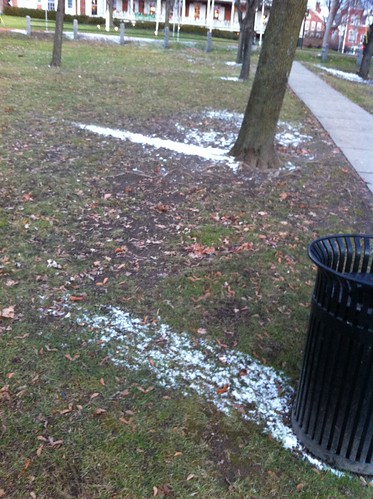
As winter builds in, many areas, such as Vermont, we experience many days where the temperature fluctuates above and below freezing. This causes water to change between a solid and a liquid form, and do lots of interesting things in the process. Fluctuation of a compound between forms in this way is known as phase change.
When I noticed the above snow patches in Middlebury Vermont, I was curious about their shape. At first, I figured that wind had deposited snow behind different objects during the snow squall. The patches weren't quite the right shape for that, though. Soon I came across an even odder patch of snow.
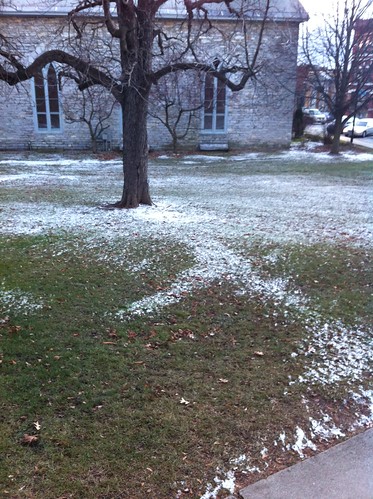
This oddly-shaped snow patch appears to outline the shadow of a tree's trunk and limbs, as it would appear during one moment of afternoon sun. Shadows move, of course, and snow patches usually persist in places that are shadowed all day, such as the north side of buildings, rocks, and mountains. In this case, the sun must have only been out for a few minutes, but it had enough strength to melt the light dusting of snow on the ground - except, of course, in the shade.
I also saw a sign with a 'shadow' of snow behind it, right down to its two posts. Unfortunately I didn't get a picture.
Later that evening the sky cleared, allowing temperatures to plummet to 19 degrees Fahrenheit. The next morning I went to Otter Creek and found these odd formations:
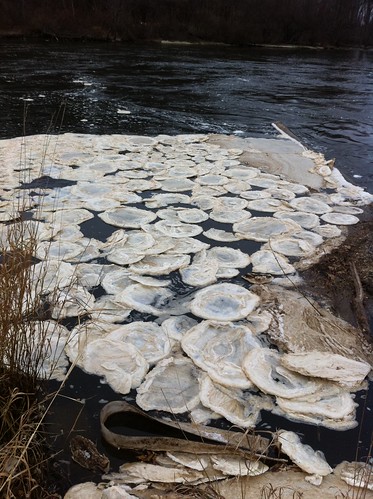
They looked like pancakes, or perhaps cow pies, and they were made of frozen foam. There is a waterfall upstream, which often generates a lot of foam. Otter Creek is a big river, and it takes a lot to get ice to form even in its slower sections (the waterfall never freezes), but apparently the foam is able to freeze much sooner. I showed the picture to a friend, who mentioned that the formation may be a foamy sort of pancake ice.
Speaking of the waterfall, everything near it was coated by ice due to freezing spray from the falls. The phenomena is similar to freezing rain, except that it doesn't need to be raining for it to happen. The ice formations were quite beautiful.
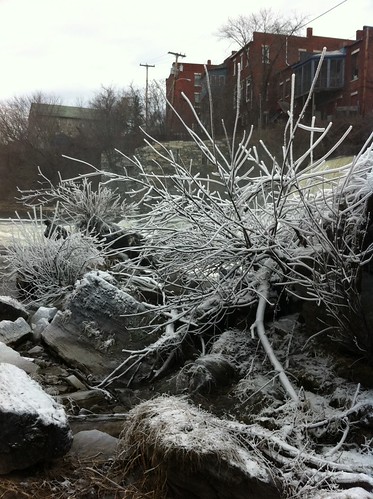
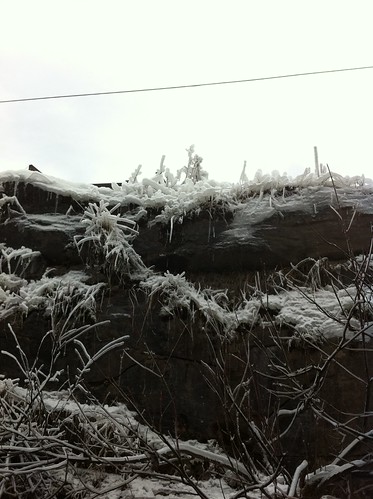
This week the saga of fluctuating temperatures and phase changes is continuing. A storm yesterday brought heavy rain and extremely strong winds to parts of Vermont. Warm air in front of the storm brought the temperature to near 60 degrees in some places, and after the front passed they plummeted to the low 40s. A near-record high of 57 degrees occurred in the early afternoon, but later in the night the temperature dropped to freezing with a bit of snow. (There is no snow on the ground now but we may have more this weekend). I'm looking forward to the first significant snow, as we were well below average in November snow (as has been the case the last few years). If the computer models are correct, though, winter should be building in for real from here on out.

No comments:
Post a Comment